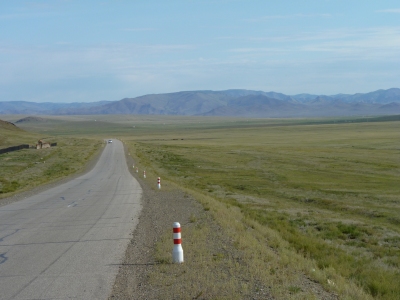
Did we mention previously that we don't really enjoy cities.
Ulaan Bataar is a city.
Having camped an hour or so's drive South of the city we set off Northwards the next morning
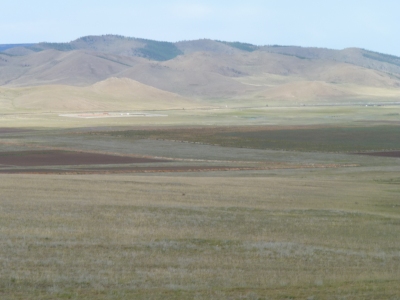
It occurred to us that not only have we seen no flowing rivers since the border we also haven't seen very much grass.
Vegetation yes. But little grass.
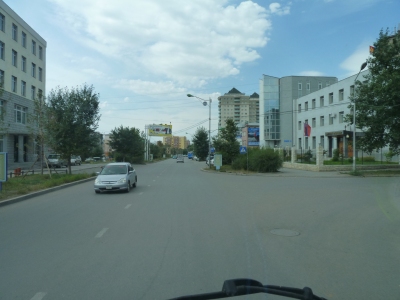
We seem to have accidents while parking.
Today's accident was to be parked outside a Mobicom office. Complete with very nice English speaking person.
We purchased a (rather expensive by Aus standards) sim card for the phone/internet.
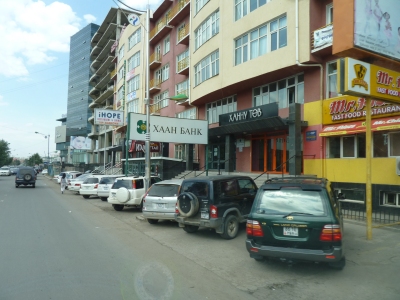
Found the map shop which was a disappointment (though perhaps that was because we didn't want "inch to the mile" maps).
Checked that we didn't need border permits for traveling to the North West of Mongolia. We'd been confused by two places with the same name.
Failed to find any maps of Russia (though we have gps).
And headed out of town. Though a bit sad we missed the museum.
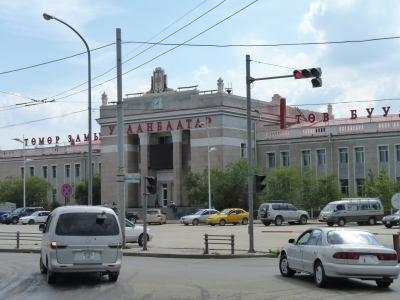
Then made a 20 km detour while we looked for road signs and asked directions.
We finally returned to one of the few roundabouts and took a different turn.
The roads around the capital were rough. Very rough.
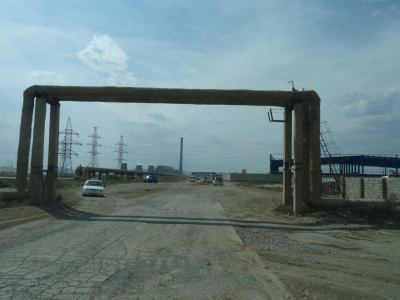
These pipes leading from the power station to the city were why. But they were high enough (or we were low enough).
The road was a bit rough, the new one is still being surfaced.
The pipes are for Combined Heat and Power from the power station. Looked like a lot thicker insulation than was needed in China. Ulaan Bataar is about the world's coldest capital city - average temperature 0 degrees C.
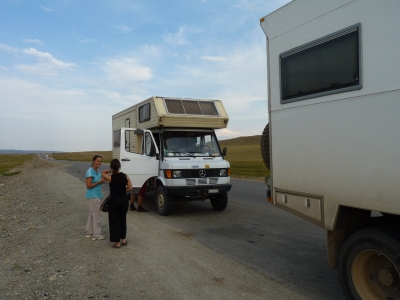
Pulled over and had a chat to Jacques and Florence Sans with their three children. Swiss, waiting for Chinese visas in Ulaan Bataar taking a small outing.
They were headed to a spot where they could easily see native Mongolian horses.
We were headed further West towards Karakoram (Karkoram). Chenggis Khan's capital, but there's hardly any of that bit left.
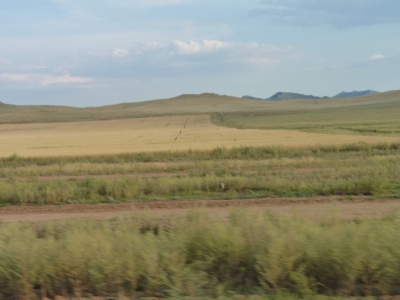
We've also seen a couple of harvesters.
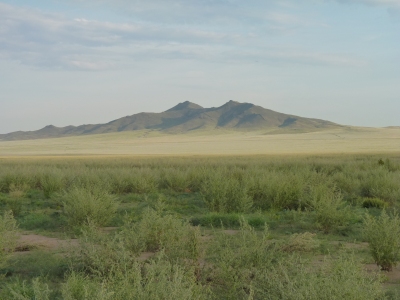
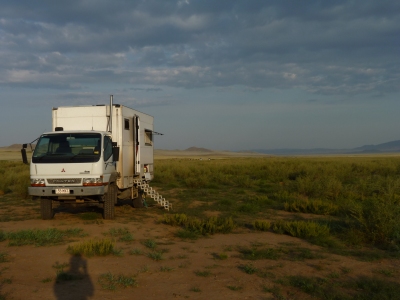
We knew that, but experiencing it is mostly what the trip is about.
We are enjoying Mongolia. We think perhaps the lack of fences has something to do with the enjoyment.
In some intellectual way perhaps the lack of physical fences is associated with a lack of mental fences.
Initially we were uncertain about making use of the freedom, but we are overcoming that self imposed fence.

The white bird in the middle is a spoonbill.
Not sure about the others. Even through binoculars.
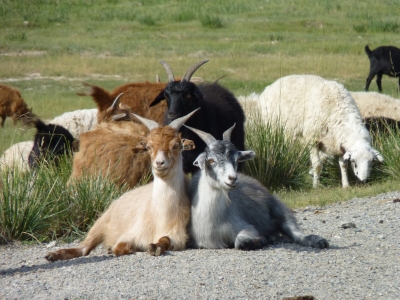
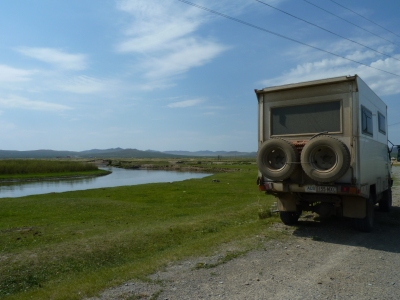
Its hard to escape power wires sometimes.
We are on the old road, there's no bridge just in front of us, but wires don't need bridges.
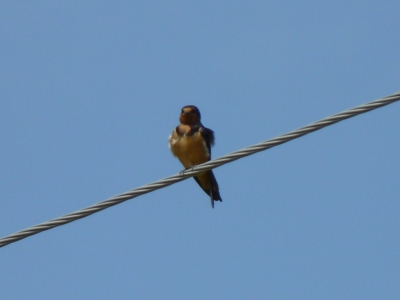
A swallow or swift.
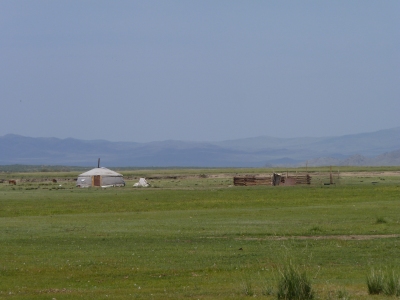
Despite the low population we are rarely alone.
And a few children passed by on the way to their swimming hole.
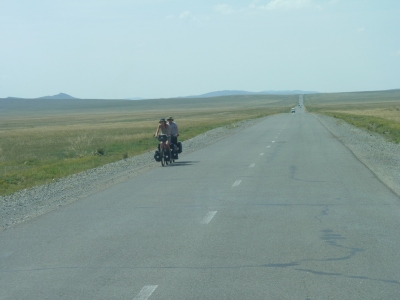
Waved to these two cyclists - yessssss they waved back, very enthusiastically.

After a famine on wildlife Mongolia is a bit of a feast.
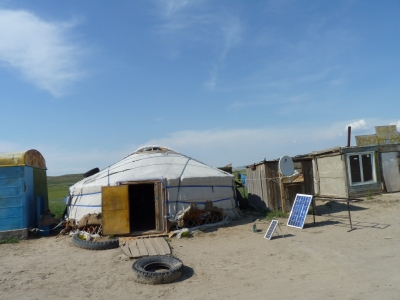
Ali understood that if we waited while a couple of people finished their meal they would drive their car there and we could follow.
I had much more important things to do, like providing a tyre inflation service to a truck with a couple of almost flat rear tyres. All done by sign language and smiles.
I got the hang of it when the truck pulled up beside us and the driver made like he was using a hand pump. I showed him our compressor with air hose. Instant smile, and we went from there.
Aren't world standards good when they work - the double ended chuck for our air hose worked on his dual wheels (inner rears can be terrible things to inflate).
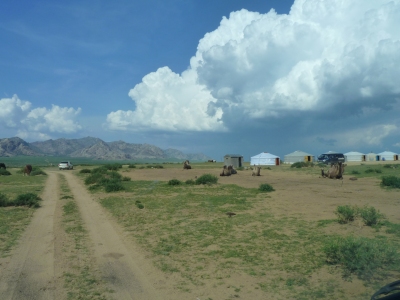
Not soft enough for 4wd though, just had to change down a gear in one place.
On the right is a ger camp for tourists. There seem to be quite a few around.
We are just East of the Mongol Els, an area of dunes in the middle of the country.
Looks like its been commercialised a bit, with camel rides, etc. Its the area that's photographed on the front cover of Lonely Planet. I wonder which came first.
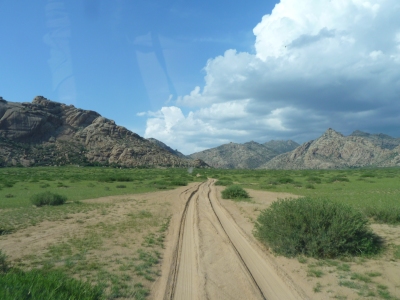
The track led into the valley where there is a small temple, some monastery ruins, and a nature reserve.
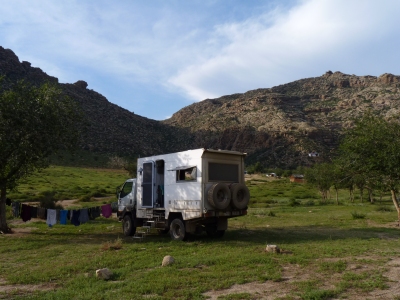
Hung out the washing that we'd done earlier in the day.
Had a look at the temple and had a chat to some Italian tourists.
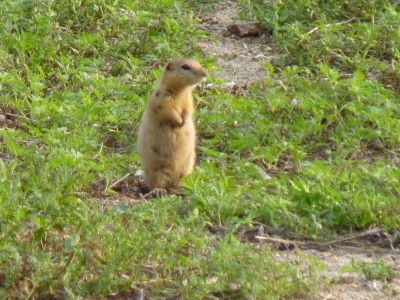
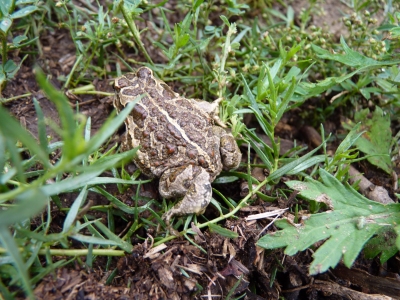
They were everywhere, despite it being sandy and no water.
Though we did find a creek the next day.

This is the flower of a thistle.
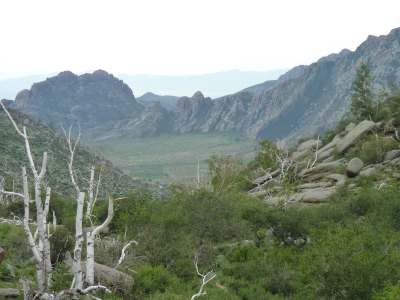
We are headed to a ruined monastery.
Destroyed in someone's purge in the 17th century.
This photo is looking back. Tardis almost visible about the center of the photo.
The rock is all coarse granite.
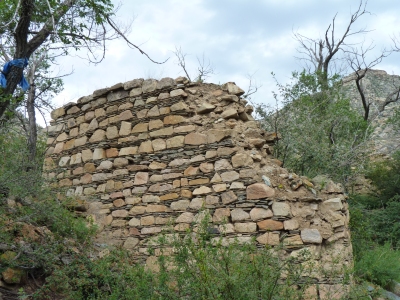
An interesting (to me) mixture of large stones, then small stones to give a flattish surface for the next layer of large stones.
Some of the small stones looked a bit like shale.
Earth fill between the outer stones.
There's more ways of building stone walls than I've had hot dinners.
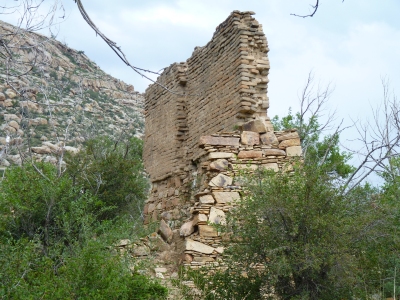
Also earth filled.

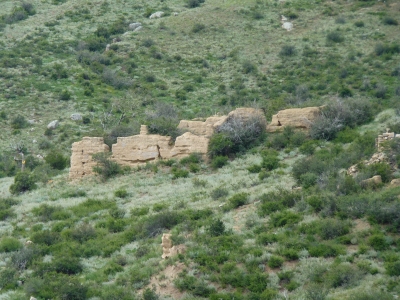
We aren't sure where the mud came from as most of what we walked on was sand from the granite.
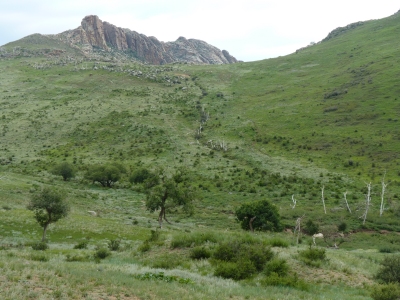
Lots of animal tracks to follow, and a few cairns and the odd ovoo.

It was a large monastery.
We also spotted a Tar on the skyline opposite.
Ok with naked eye, much better with the binoculars, terrible with the camera - it saw us and moved on.
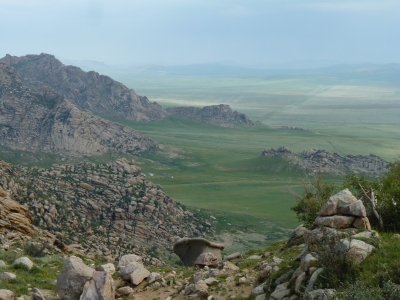
The main road is about 15 km away in the big valley.
Valleys still seem to be very wide, shallow, affairs.
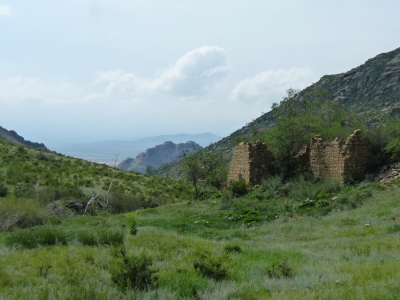
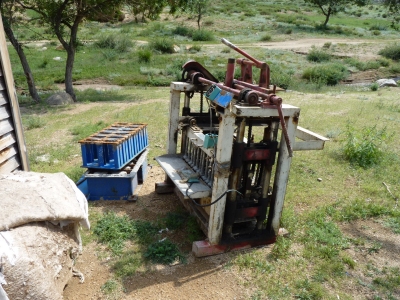
We think a concrete block making machine.
A sort of combined press and shaker with a complicated mould.
The drive belt on it looked quite new, but no motor.
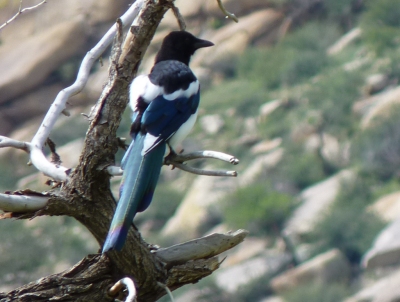
Last evening they flew away whenever we got close (as they do).
This was one of two that simply ignored us.
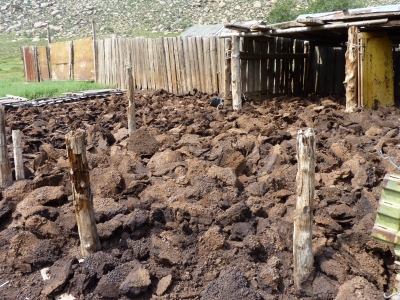
This is a very deep pile of droppings. Dug over and drying. Possibly fuel for winter.
The animals are probably eating somewhere in the valley.
Maybe kept here over Winter.
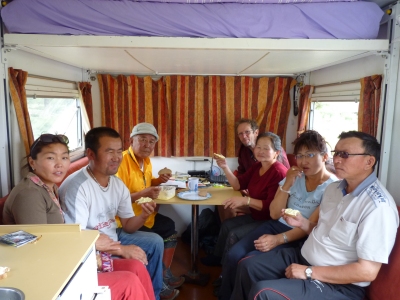
They were interested in Tardis.
They looked impressed with the light switches, running water, and particularly the heater. Maybe they were trying to tell us something!
The two younger ladies knew a bit of English.
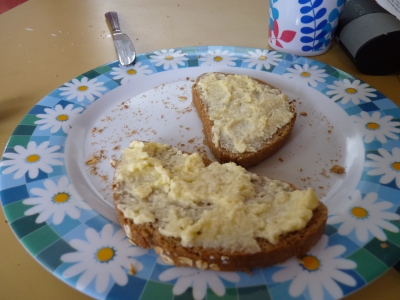
The butter was in a plastic fridge container, not a commercial package.
It tasted good.
Not sure about the effect on cholesterol but I'm sure it won't matter just this once ......
Everyone had some. These two pieces were extras for us to eat when everyone else had left. We must look undernourished!
Its taken us a few days to begin to settle in to Mongolia. Its so very different. But we think we are beginning to get the hang of it.

Not too long after our visitors left it started raining. Not particularly heavy, just persistent. Impossible to photograph though.
It continued overnight and next morning.
Temperature at 8 am is about 13 degrees C.
Not cold enough to break out the down jackets, or turn the heater on, but the wind on the rain is decidedly chilly while collecting water.
And the marmots are hiding.
Forecast at Karkoram is for low 20's tomorrow.